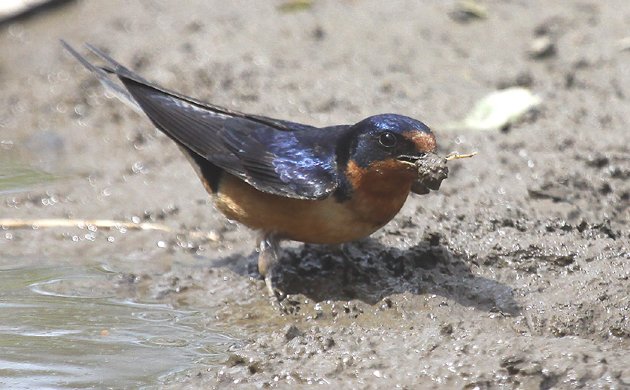
A week ago this past Friday I did a Queens Big Day in that I spent the whole day birding across a variety of parks in Queens looking for birds. I didn’t plan it well and I was mostly just enjoying birding my favorite borough for the entire day. It was fun and I ended up with 124 species.
So, this past Friday, I did it again. And, amazingly, despite visiting less parks and having to end my day even earlier than last time to go pick up my son, I ended the day with the same exact number of species. Weird, no?
Before we get into the photographic story of the day I will briefly outline my route and a few highlights. I started the day at Jamaica Bay Wildlife Refuge hoping for rails (I heard and saw none) and then made my way to Strack Pond on the western end of Forest Park where I was pleased to find White-crowned Sparrows and a Solitary Sandpiper. Then I headed to the waterhole where there was a wood-warbler explosion before I explored a significant portion of the park with Eric Miller, he of the golden ears. Despite falling off a log, which resulted in some bleeding (it’s not a big day unless someone bleeds), we had an amazing run through the park, picking up several surprising birds including late Red-breasted Nuthatch, Blue-headed Vireo, and Winter Wren. After leaving Forest Park I headed for the coast and birded Edgemere Landfill where I was pleased to see Bobolinks and three Orchard Orioles. The beach in the Rockaways was next where I saw expected beach birds and then I was on to Big Egg Marsh where I cleaned up pretty well on shorebirds, including my first Bad-ass Sandpipers of the year. At Jamaica Bay once again I managed to get a few herons that I needed but mostly I just overheated walking the trails at a very fast pace. So I went back to Forest Park where I hung out at the waterhole until I had to go get Desi.
And there my little big day would have ended with 123 species checked off except that when Desi and I were getting back to the house I spotted an odd bird soaring way up high so I grabbed Desi, high-tailed it up the stairs to my third floor apartment, grabbed my binoculars and camera, and watched a soaring Double-crested Cormorant. Doh! Fortunately, my careful examination of the cormorant led me to discover two Common Nighthawks that I wouldn’t have known were foraging way up high if I hadn’t been looking at the cormorant.
This Blackpoll Warbler was photographed from a fallen log balanced about ten feet off the ground. After photographing this bird I saw what I thought might be a female Cerulean Warbler and the excitement caused me to lose my balance and fall from the log. I hit my shin pretty hard on a stump on the way down. Birding, it’s dangerous!
I was sad to see that this Killdeer at Big Egg Marsh had an injured leg though it wasn’t injured enough that it would let me catch it.
This Black-and-white Warbler has altogether too much melanin in its face.
I was surprised by the three Orchard Orioles at Edgemere Landfill because I had never seen that species there before Friday.
This Bay-breasted Warbler in Forest Park, one of eight on the day, was detected by Eric Miller’s sharp ears.
Neither an Osprey carrying a fish nor an Osprey carrying a stick is unusual. It is odd when one is carrying both. This bird, seen flying over Jamaica Bay Wildlife Refuge’s East Pond, was one of seven on the day, and is obviously banded.
I rarely heard the sneaker-squeak call of Rose-breasted Grosbeaks on Friday. This young male at the Forest Park waterhole was one of only two all day long.
Willet on a stick would be a great name for a band.
How can you not take a picture of a Baltimore Oriole below eye-level? This male came down at, where else, the Forest Park waterhole.
Worm-eating Warbler was my twenty-first and final wood-warbler species of the day. Though I only saw one I did see or hear more than ten of thirteen different species of wood-warbler for the day!
Though I had heard of the behavior before I had never actually seen a Double-crested Cormorant soaring on a thermal before Friday. Neat.
Little big days. Fun times! You should try one…
…


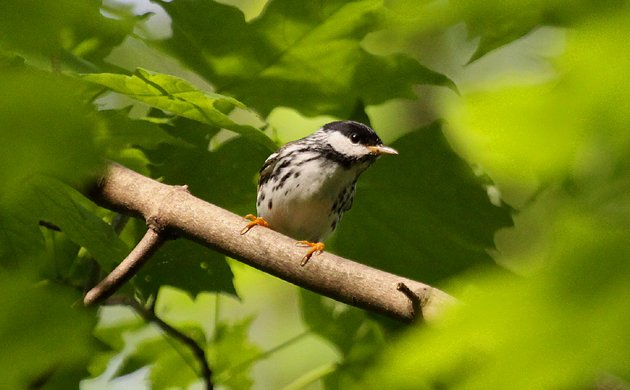
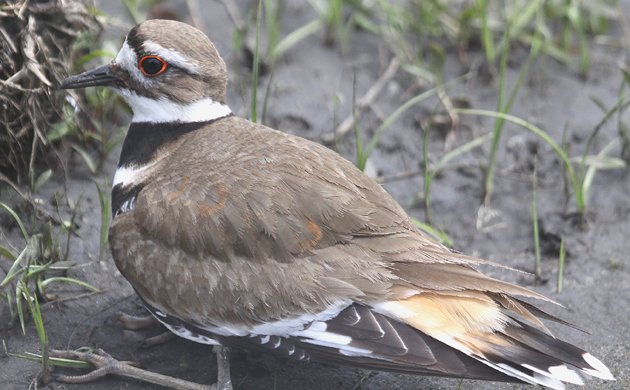
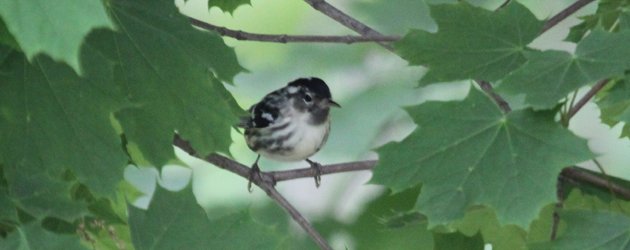
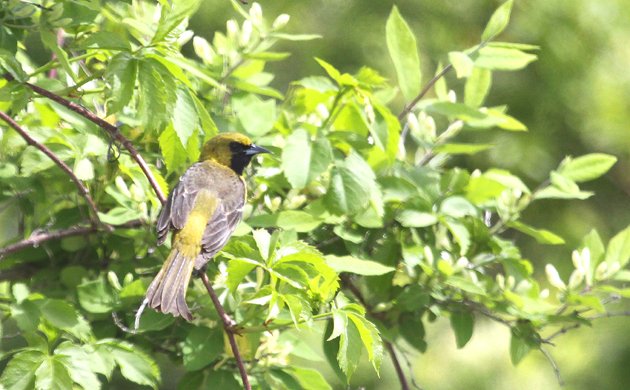
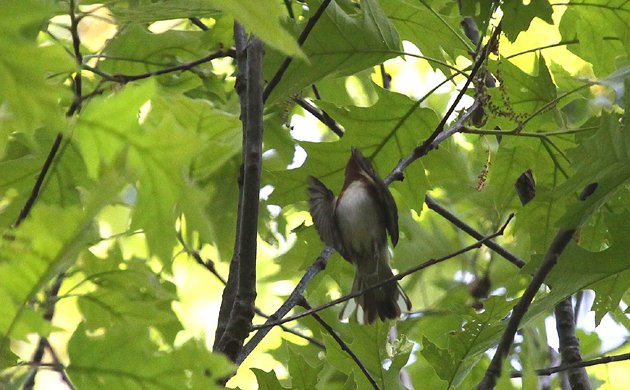
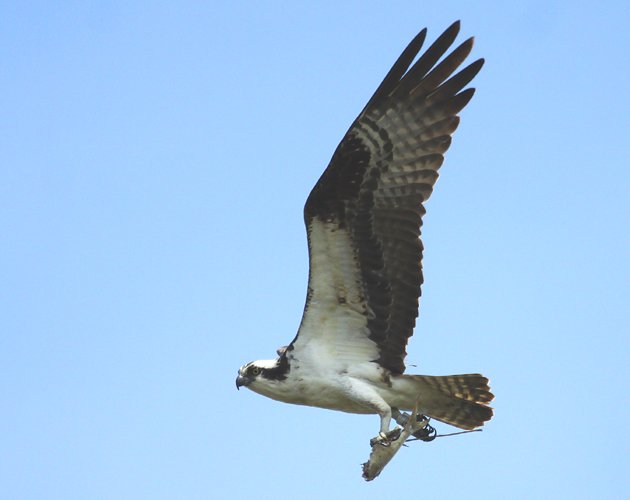
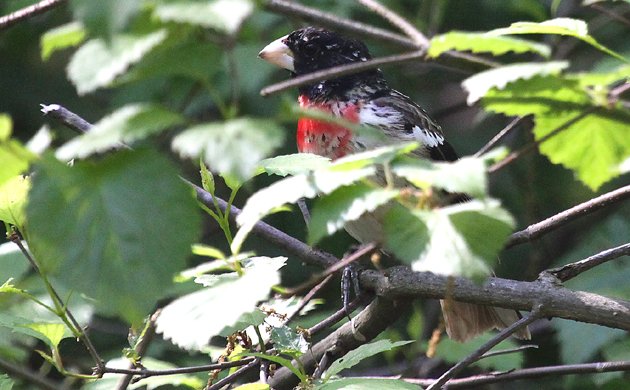
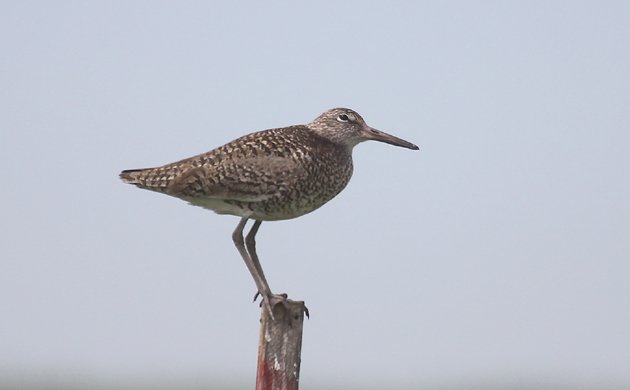
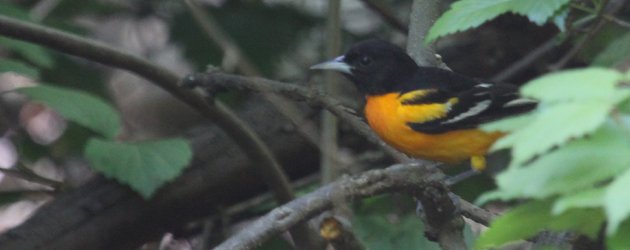
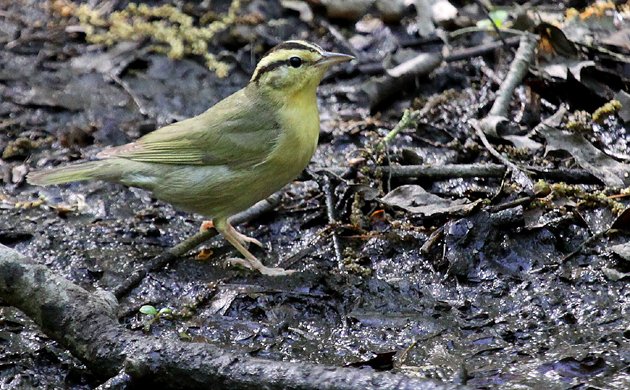
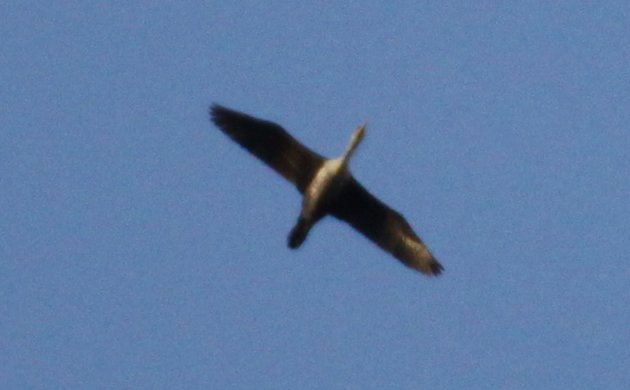











soaring Double-crested C’s can be a real pest as they are reminiscent of Anhingas. This may not be much of an issue in Florida, but it is around the Great Lakes.
And no, you didn’t take that picture of a Worm-eating Warbler, you didn’t. This species is invisible to the naked eye.
Wow! I’ve never been close enough to a Killdeer to see it had a red eye-ring. Congratulations on a rather amazing day, complete with some great photos!